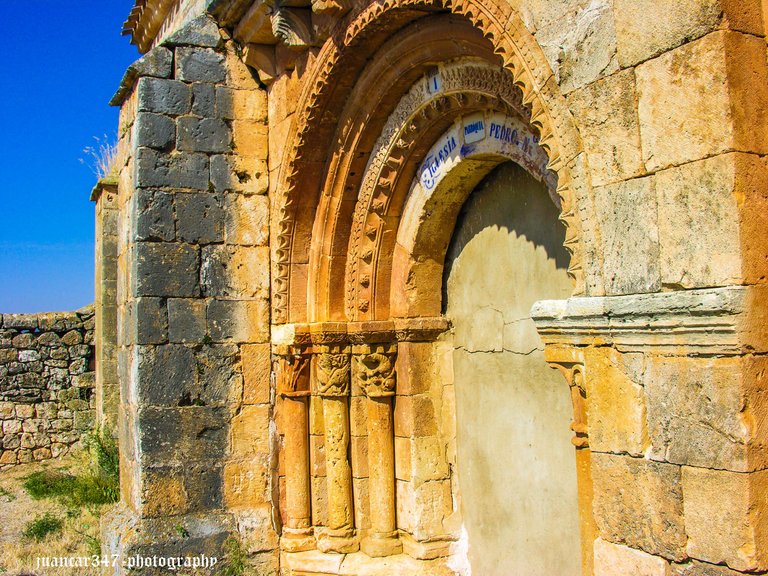
He asserted that modern juggler of the Castile of yesterday, the Castile of today and the Castile of tomorrow, who was, under my humble point of view, that ingrained character whom the world knew by the sovereign name of Miguel Delibes, that breadth of Castile, depends not only on the perspective with which we view it, but also and very especially, on the part of Castile we dare to traverse. It does not cease to be an experience, when less subtle, to know, that, in that passionate eagerness of discovery, to know oneself as a nomad in the variegated geography of Castile entails, too, familiarizing oneself with some novel scenarios, where it is still possible to encounter, not only those immortal characters - allow me, to set as an example Mr. Caius, the one of the disputed vow or the unfortunate Azarias, the one of the 'beautiful kite bird'- but also, to meet with surprising and memorable survivors of a Cultural Heritage, which, fragmented. Broken and thirsty for justice, like the Castilian soils themselves, it still surprises by the magnitude of its grandeur.
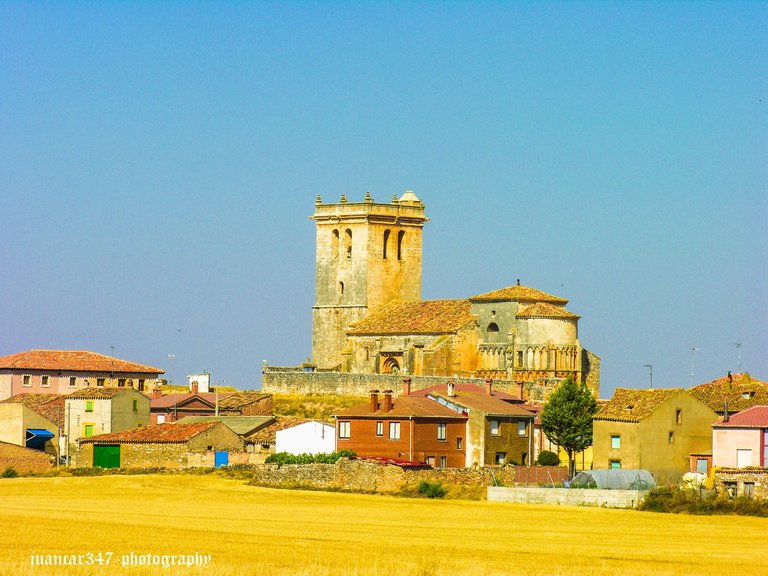
It is enough, simply, to view them with the cabalistic gaze of another memorable knight, in this case, of that new Castile that holds out to Andalusia and Extremadura, Don Quixote, to see in them, giants of a spirituality who adopted the striking Romanesque architecture as model of expression, becoming, at once, undertakers and guardians of a debts, which, since the fall of the Common pendons, never again rose. And still more: observing the beauty of its compact apse, where a fine blind archery calls attention, reminiscent and much, of the Lombard, joined, moreover, to the plastic expressiveness of a masterfully carved columns, the dreamy and interested traveller, one cannot but think, that, after all, in Castile, besides the popular model of Silos, there were other models well worth knowing.
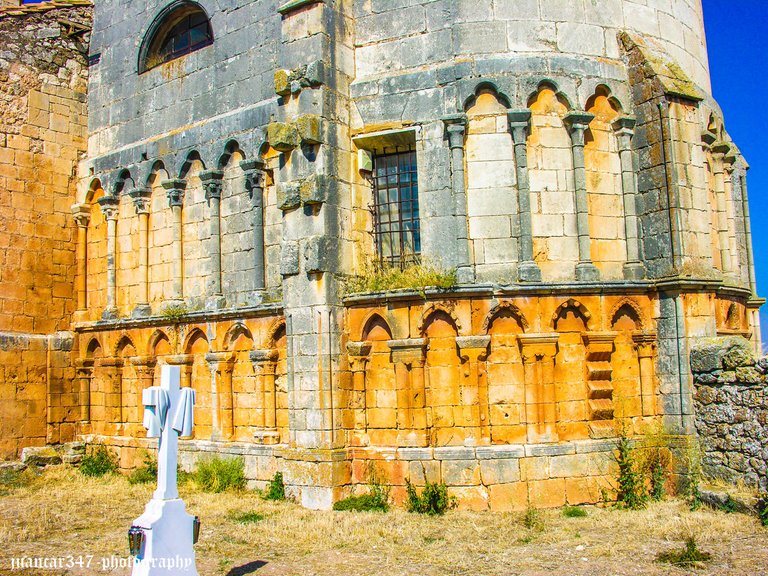
Afirmaba ese moderno juglar de la Castilla de ayer, de la Castilla de hoy y de la Castilla de mañana, que fue, bajo mi humilde punto de vista, ese enraizado personaje que el mundo conoció con el nombre soberano de Miguel Delibes, que la anchura de Castilla, no sólo depende de la perspectiva con la que la miremos, sino también y muy especialmente, de la parte de Castilla que nos atrevamos a recorrer. No deja de ser una experiencia, cuando menos sutil, saber, que, en ese apasionado afán descubridor, saberse nómada en la variopinta geografía de Castilla, conlleva, también, familiarizarse con unos escenarios novelescos, donde todavía es posible encontrarse, no sólo con esos personajes inmortales -permítaseme, poner como ejemplo al señor Cayo, el del disputado voto o al desgraciado Azarías, el de la ‘milana bonita’- sino también, reencontrarse con sorprendentes y memorables supervivientes de un Patrimonio Cultural, que, fragmentado. Roturado y sediento de justicia, como los propios suelos castellanos, todavía sorprende por la magnitud de su grandeza.
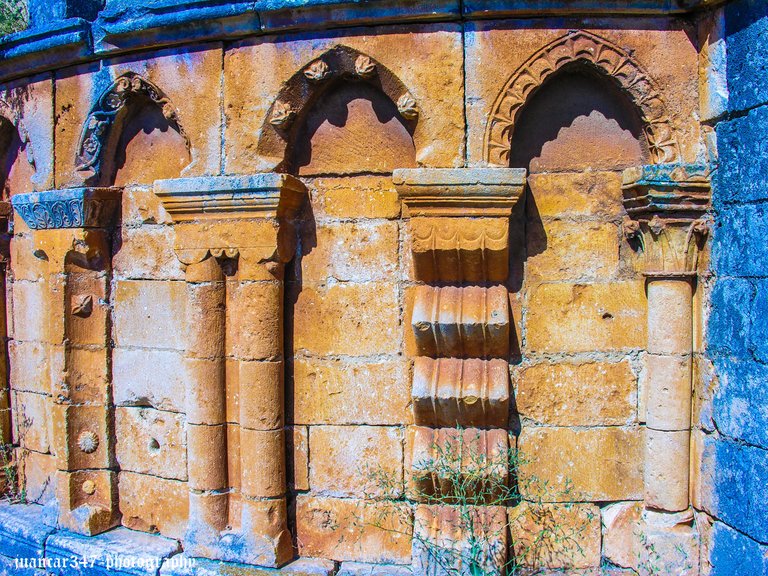
Basta, simplemente, verlos con la cabalística mirada de otro memorable caballero, en este caso, de esa nueva Castilla que tiende la mano a Andalucía y a Extremadura, Don Quijote, para ver en ellos, gigantes de una espiritualidad que adoptaron la sorprendente arquitectura románica como modelo de expresión, convirtiéndose, a la vez, en sepultureros y guardianes de unos deudos, que, desde la caída de los pendones Comuneros, nunca más se volvieron a levantar. Y más aún: observando la belleza de su compacto ábside, donde llama la atención una fina arquería ciega, que recuerda y mucho, a la lombarda, unidas, además, a la plástica expresividad de unas columnas magistralmente labradas, el viajero soñador e interesado, no puede menos que pensar, que, después de todo, en Castilla, además del popular modelo de Silos, hubo otros modelos que bien merece la pena conocer.
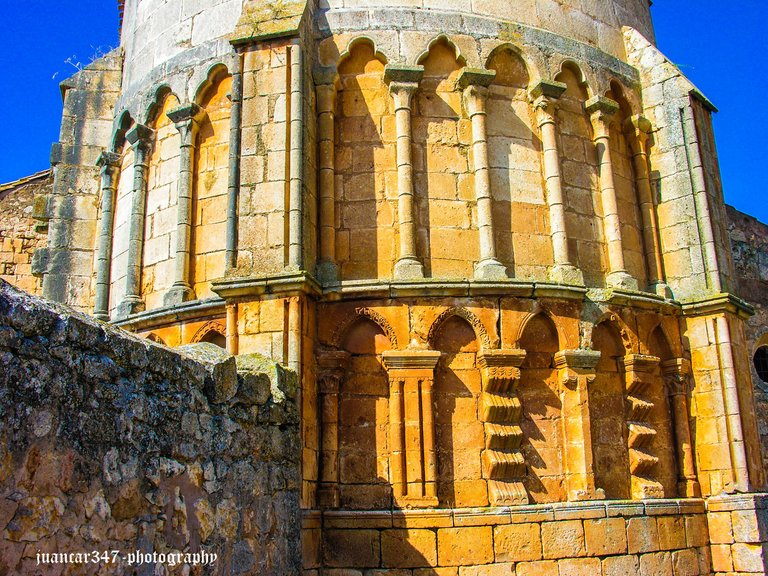
WARNING: Both the text, and the accompanying photographs, are my exclusive intellectual property and therefore, are subject to my Copyrights.
AVISO: Tanto el texto, como las fotografías que lo acompañan, son de mi exclusiva propiedad intelectual y por lo tanto, están sujetos a mis Derechos de Autor.
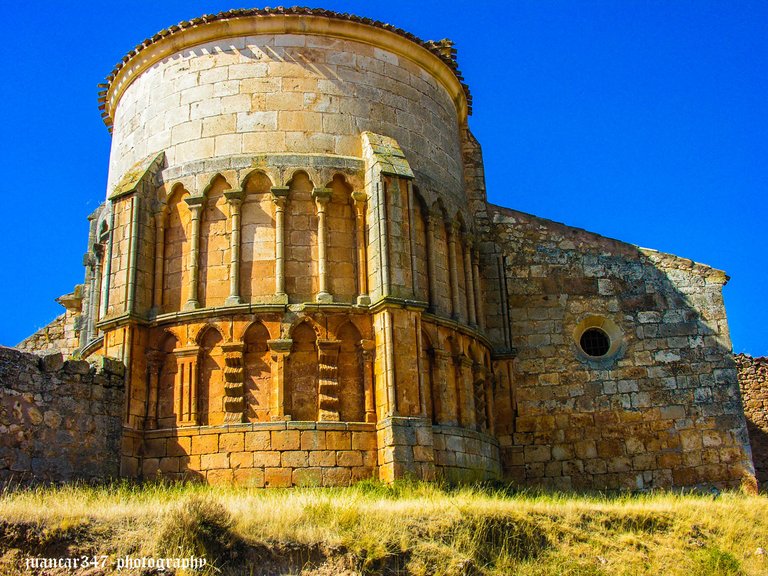
#hive #posh
Is the building what is called the Castile or what?
It is a church, although, due to its dimensions, it could be considered a fortress. In fact, during the Middle Ages, many churches also offered the function of a fortress or stronghold.